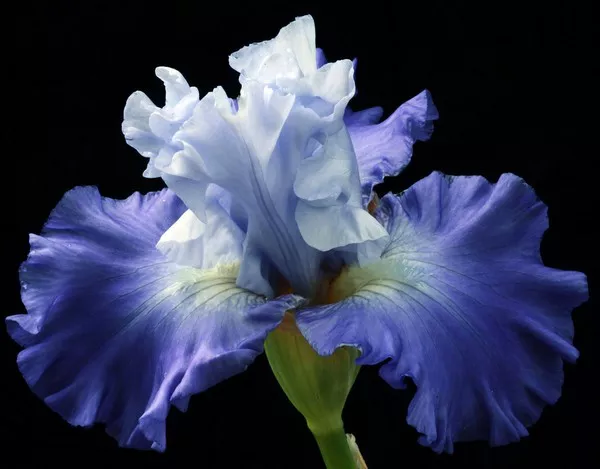The Bird of Paradise (Strelitzia reginae) is a stunning tropical plant known for its distinctive and vibrant flowers that resemble the plumes of an exotic bird. Native to South Africa, this plant has become a popular choice for both indoor and outdoor cultivation around the world. While its foliage alone is striking, the true spectacle lies in its blossoms. If you’re wondering how to coax your Bird of Paradise into producing those captivating flowers, this article will guide you through the process, offering insights to ensure your plant blooms in all its glory.
A Glimpse at the Bird of Paradise Plant
Before delving into the intricacies of getting your Bird of Paradise to flower, let’s take a moment to appreciate its beauty and significance. The Bird of Paradise plant boasts large, banana-like leaves that are arranged in a fan shape. While the foliage itself is often enough to make a statement, it’s the unique bird-like flowers that truly steal the show. These flowers, characterized by their brilliant orange and blue hues, bear a resemblance to the plumage of a tropical bird, hence the name.
Factors Influencing Flowering in Bird of Paradise
Getting your Bird of Paradise to flower requires a combination of proper care, the right conditions, and a bit of patience. Here are the key factors that influence its blooming process:
1. Maturity of the Plant
The Bird of Paradise plant typically needs to reach a certain level of maturity before it starts producing flowers. This can take several years, often between three to five years or even longer. Younger plants are more focused on foliage growth, so it’s important to be patient.
2. Amount of Sunlight
Sunlight plays a crucial role in triggering flowering. Bird of Paradise plants thrive in bright, indirect sunlight. When grown outdoors, they prefer full sun to partial shade. Adequate light exposure encourages flower development.
3. Temperature and Climate
Bird of Paradise plants prefer warm and tropical climates. They can be grown outdoors in zones where temperatures do not drop significantly. If you’re cultivating the plant indoors, make sure to maintain a consistent room temperature, avoiding sudden fluctuations.
4. Proper Watering
While Bird of Paradise plants require regular watering, it’s important to allow the soil to dry slightly between waterings. Over-watering can lead to root rot, which can hinder flowering.
5. Soil and Fertilization
Well-draining soil is essential for Bird of Paradise plants. Use a mix that promotes good drainage to prevent waterlogged roots. Fertilize your plant with a balanced, water-soluble fertilizer during the growing season (spring and summer), as this can encourage flowering.
6. Pot Size and Repotting
If you’re growing your Bird of Paradise in a container, ensure that the pot is large enough to accommodate the plant’s growth. Repotting may be necessary every few years to provide adequate space for the roots to expand.
Steps to Encourage Flowering
Now that we’ve covered the factors that influence flowering, here’s a step-by-step guide to help you encourage your Bird of Paradise to bloom:
1. Provide Adequate Light
Place your Bird of Paradise in a location where it receives bright, indirect sunlight. If growing indoors, position it near a window that provides ample light without direct sun exposure.
2. Monitor Temperature and Humidity
Maintain a consistent room temperature for indoor plants, avoiding drafts and sudden temperature changes. If possible, keep the humidity levels higher, especially during the dry months.
3. Water Wisely
Water your Bird of Paradise regularly, allowing the top inch or two of soil to dry between waterings. Avoid letting the plant sit in standing water.
4. Choose the Right Fertilizer
During the growing season (spring and summer), feed your Bird of Paradise with a balanced, water-soluble fertilizer every 4-6 weeks. This provides the necessary nutrients for healthy growth and eventual flowering.
5. Prune and Remove Debris
Regularly remove any dead or damaged leaves to promote better air circulation and overall plant health. Trimming can also redirect the plant’s energy towards flower production.
6. Be Patient
Remember that the Bird of Paradise plant takes time to mature and develop the energy needed for flowering. It might take a few years before you see the first blooms, so patience is key.
Common Challenges and Troubleshooting
While Bird of Paradise plants are relatively hardy, they can still face challenges that hinder flowering. Here are some common issues and their solutions:
1. Lack of Light
Insufficient light can lead to a lack of flowering. If your plant isn’t receiving enough light, consider moving it to a brighter location or supplementing with artificial light.
2. Improper Watering
Over-watering or allowing the plant to sit in standing water can lead to root rot and impact flower production. Ensure proper drainage and adjust your watering routine accordingly.
3. Nutrient Deficiency
If your Bird of Paradise isn’t receiving enough nutrients, it may not have the energy to produce flowers. Make sure you’re using a balanced fertilizer and following a consistent feeding schedule.
Conclusion
With its captivating flowers and unique appearance, the Bird of Paradise plant is a true gem in the world of indoor and outdoor gardening. By providing the right conditions, care, and a touch of patience, you can encourage your Bird of Paradise to reward you with its splendid blooms. Remember that each plant is unique, and while the process may take time, the moment those vibrant flowers unfurl is well worth the effort.


